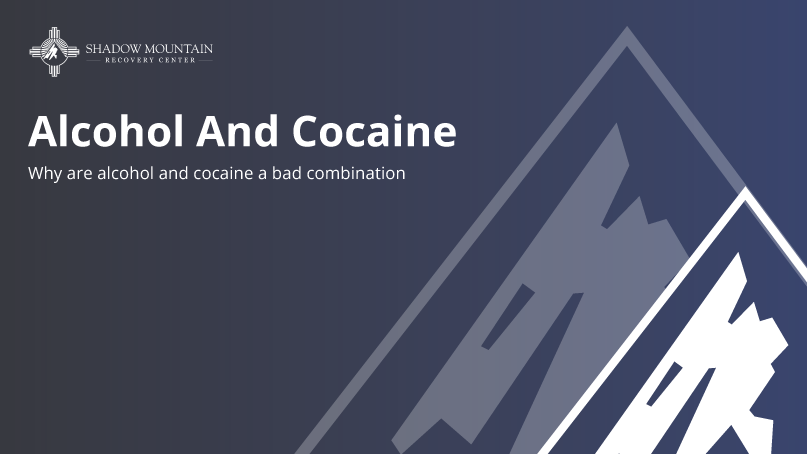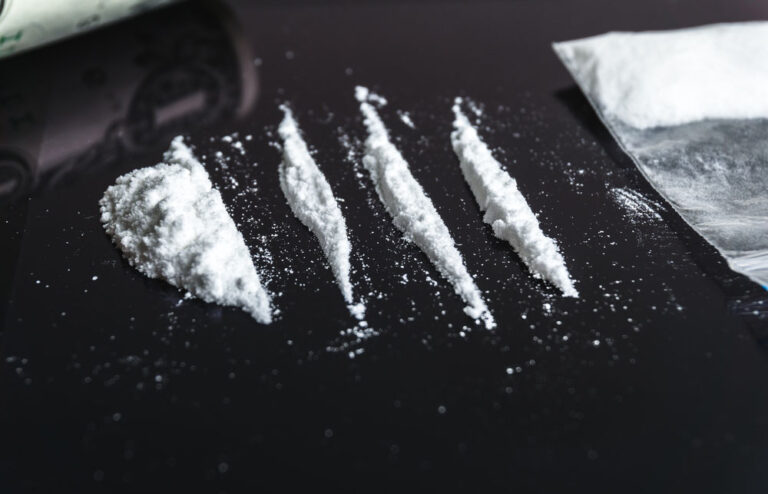Alcohol And Cocaine
Mixing substances – how common is it? When you picture a raging party, let’s say a college party, it’s not uncommon for the media to spotlight substance use. While alcohol is the most common substance at parties like this, jokes about “doing lines in the bathroom” are not unheard of. How many people actually participate in polysubstance use and have multiple substances in their system at once?
7.8% of all deaths in the state of New Mexico were caused by alcohol as of 2020. At the time, this was almost double the national average of 4.1% of deaths. We all know that alcohol consumption is common, but what about cocaine? As of 2021, cocaine is the 5th most common substance to be involved in polysubstance use-based overdoses in New Mexico.
One of our goals here at Shadow Mountain Recovery is to continue to provide easy-to-access, informative posts about substance use. Spreading awareness and giving accurate information can help not only lessen the stigma associated with substance use but also potentially help someone make that first step toward recovery. Let’s look more closely at the alcohol and cocaine combination and how it can impact your body.
Polysubstance Use – Who is More Likely to Combine Alcohol and Cocaine?
Substance use disorders can occur in any demographic, but are some more likely to participate in it than others? Can external factors impact whether or not someone might develop a substance use disorder?
39% of people in the U.S. between the ages of 18-35 are actively participating in substance use. People aged 24-29 come up shortly behind with 34% of people being impacted. Overall, substance use numbers tend to lessen the older the age group is, but what about those that are even younger? It turns out that 47% of adolescents will try at least one substance by the time they graduate high school.
Let’s look more specifically at cocaine and alcohol. The same study shows that over 15 million people in the US have an AUD (alcohol use disorder), and over 5.5 million people reported using cocaine in the last year.
Mixing Cocaine and Alcohol – What are the Dangers and Side Effects?
When it comes to combining substances or taking them too close together before your body has time to fully process the previous substance, there are some side effects that can occur as a result. Many times, polysubstance use can occur without a person realizing it, even if they’re knowingly partaking in more than one substance. The amount of time a substance stays in your system is much longer than you might think. If you don’t know how long it takes for something to metabolize, you could think it’s out of your body because you’re not feeling the effects anymore, without realizing that it’s still being processed inside of you. Not only can this increase your odds of higher use, but it could contribute to a cocaine use disorder, or an alcohol use disorder.
Alcohol is a depressant. It primarily affects your central nervous system, slowing down your body and the messages being sent through it. Cocaine, on the other hand, is a stimulant. It impacts the dopamine centers in your brain and causes feelings of euphoria.
When you have two types of substances in your body at the same time, a depressant and a stimulant, it can make you feel less of the effects of both. This can be dangerous – let’s talk about why.
The Effects On Your Mental Health
Cocaine and alcohol both can impact your brain, your feelings, and sometimes your perception.
Here are some of the more common mental health effects you might notice:
- Extreme happiness
- Impulsive behavior
- Irritability
- Paranoia
- Lowered inhibitions
- Slurred speech
- Lessened coordination
- Difficulty concentrating
The Effects On Your Body
Not every side effect is easily noticeable, and some might build up over time. For example, some signs of alcoholism, or long-term alcohol use, is highly connected to liver damage, which can’t always be detected until it’s very far along. Some effects might appear more rapidly, though, like nausea or elevated temperature and heart rate.
Here are some of the many side effects of alcoholism and cocaine use:
- Altered perception
- Headaches
- Diarrhea
- Termors
- Dilated pupils
Another thing that can occur when both cocaine and alcohol are in your system is the production of another substance known as cocaethylene. This substance is produced specifically when cocaine and alcohol are combined. Many people haven’t heard of cocaethylene and might not know what it is or what it does, but don’t worry, we’re happy to provide some of those answers.
What Is Cocaethylene and Is It Deadly?
Cocaethylene is a substance that is created when alcohol and cocaine are combined. Even though it comes directly from the combination of alcohol and cocaine, it’s primarily a stimulant and falls under the same umbrella as cocaine. It also impacts dopamine receptors and stays in the body much longer than cocaine does. This means that there is now a third substance in your system, and it can be present in your body longer than you realize.
Cocaethylene also impacts your cardiovascular system by altering your sodium intake. This can cause your heart rate to skyrocket on top of what it might already have from the original cocaine consumption. All of these side effects can combine, increasing your risk for medical complications.
What Other Risks Come From Combining Cocaine and Alcohol?
While most of these symptoms wouldn’t be classified as “pleasant,” none of them have been particularly deadly so far. We’re not done yet, though, as there’s another major risk factor to keep in mind when it comes to taking both cocaine and alcohol at the same time: overdose.
Out of all of the overdose deaths in the past few years in New Mexico, 75% involved more than one substance. Overdoses occur when your body is overwhelmed by the substance or substances in your body. This happens when you consume too much before your body has had time to process what’s already been ingested. You cannot speed up the process of metabolizing a substance, and sometimes we don’t realize that something is still present in our system.
When your body gets overwhelmed in this manner, it starts to shut down. This is what is known as an overdose. Alcohol poisoning is also more likely when the two are mixed. This is because of their opposing nature. Since they’re known to sometimes “cancel each other out,” it can become much less clear how intoxicated you actually are. Many times people will then continue to consume more of one or both substances in order to feel their effects again without knowing that both alcohol and cocaine are still present in their bodies.
If an overdose happens to you or a loved one, there is time to get help and make sure the person is okay. Here in New Mexico, we have the Good Samaritan Law. This law protects people seeking medical help, in this instance, it’ll protect you from being persecuted for getting help for an overdose. If you notice any of these symptoms, don’t hesitate to call for help.
- Clammy or blue-tinted skin
- Unresponsiveness to stimuli
- Slurred speech
- Dilated pupils
- Seizures
Getting Help For Alcohol And Cocaine Use Disorder
If you’re looking to get started on the road to recovery, Shadow Mountain Recovery is here to help. We have the ability to help you along every step of your journey. We just want to see you reach your healing goals.
We understand that every patient we have is unique. This is why we believe in offering more than just the 12-step program for recovery. One plan does not fit all. Instead, we offer a variety of additional, evidence-based programs to help bolster your recovery and find what works best for you. Some of our unique programs include ear seeding, yoga therapy, alcohol detox, community programs, and more. We also have amazing staff members from our licensed psychiatrists to our professional chefs. You shouldn’t have to manage cocaine and alcohol withdrawals alone. Come start your journey while being surrounded by the stunning nature of the Southwest.
If you have any questions about our programs, substance use, or anything else, don’t hesitate to give us a call today at (505) 657-8937 We look forward to hearing from you.










